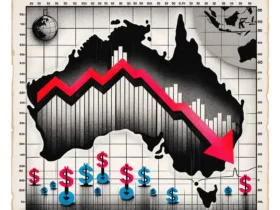Introduction
A dynamic NFT is an NFT with characters and data that can be changed and updated found on external events. Using our minting APIs, you can create dynamic NFTs very easily.
Dynamic NFTs are the next step in the development of the NFT space, linking the verified unique nature of NFTs with dynamic data inputs and off-chain computation. The fundamental carries dynamic features to NFTs, offering them with inputs such as provably fair, tamper-proof randomness, and a wide range of data from the real world.
Being powered by blockchains, NFTs are inert because they are narrow to the blockchain world only. But when you create NFTs using ChainTechSource, it is no longer a static NFT. ChainTechSource has driven NFTs that are dynamic as they can connect to off-chain data sources like IoT data, web APIs, and other data providers.
With its ability to control real-world data sources, dynamic NFTs are much more appropriate and usable. Also, dynamic NFTS can leverage VRF to interface with current backend systems, access verifiable randomness, and even trigger cyber-physical systems.
In this blog, we will go through all the steps to deploy your own dynamic NFT to the OpenSea marketplace. The first step is to get the chain data in your NFT’s smart contracts. This can be completed in three steps:
- Price feeds: It gets the latest prices of assets in your smart contracts.
- VRF: It uses randomness in your smart contracts.
- Contract library: Here, you can request & accept data from any API
For instance, if you are minting NFTs in Binance Smart Chain, then Price feeds will be shown and accumulated on the off-chain data from multiple premium data aggregators and then sent on the BSC network.
2. Once the off-chain data is on-chain, you can request the data feed from your smart contracts, and reliant on the values offered by oracles, you can modify the NFT assets and proceed with the minting.
3. Once minting is completed, you can list the dynamic NFTs in the NFT marketplace platform for selling.
Presently, there are around 16 use cases available to developers for creating Dynamic NFTs using oracle. These NFT use cases can be considered into the following four categories:
NFTs for in-game items are standard. Oracles can use off-chain data to make NFTs for in-game items. This can decide competition outcomes by accurately transferring NFTs ownership among the players based on their game performance.
As an input, VRF (Verifiable Randomness Function) can smear random characters to an NFT, such as the location, creation, and distribution of in-game items. The impartial randomness of dynamic NFTs can define the rarity and power ranking of each new-minted NFT for in-game items.
Games like Pokemon GO display how digital games can create global competitions in the real world. Oracles can create a similar experience by NFTs. Using biased or unbiased user data allows NFT minting in real-world locations. These NFTs can be placed at random locations or at backed locations using VRF.
Minted NFTs using oracle can signify real-world sports players. This can ease fantasy sports competitions, where the value of the NFTs representing particular players will depend on the real-life statistical outputs of the associated player.
Simply by tracking the real-life performance data of the player, oracles can define the value of NFTs and, with all transparency, can adopt the winners of the fantasy sports competition and generate the winning payouts.
Dynamic NFTs powered by oracles play a key role in the gaming app Aavegotchi, which has integrated VRF to provide it with a source of provable randomness.
One use case for Dynamic NFTs like this is to back blockchain-based insurance. These policies can be made into dNFTs, allowing for customizable crop insurance policies based on facts that oracles receive from the external world.
As they allow for real-time reporting across huge geographies and increased efficiency around payouts, Dynamic NFTs are a dominant alternative to traditional forms of cover that are often subject to manual treating delays and subjective assessment.
Creating dynamic NFTs is simple when you combine quick and cost-effective platforms like Polygon with powerful decentralized oracle networks (DONs) that expand with smart contracts.
Polygon dApps can also use ChainTechSource for a wide range of other use cases, such as using random amounts on Polygon to make probably realistic blockchain games or decentralized prices based on Polygon to influence the next revolutionary Defi protocol.
When it comes to creating secure, feature-rich dApps, ChainTechSource verified oracle infrastructure unlocks huge potential for developers.







